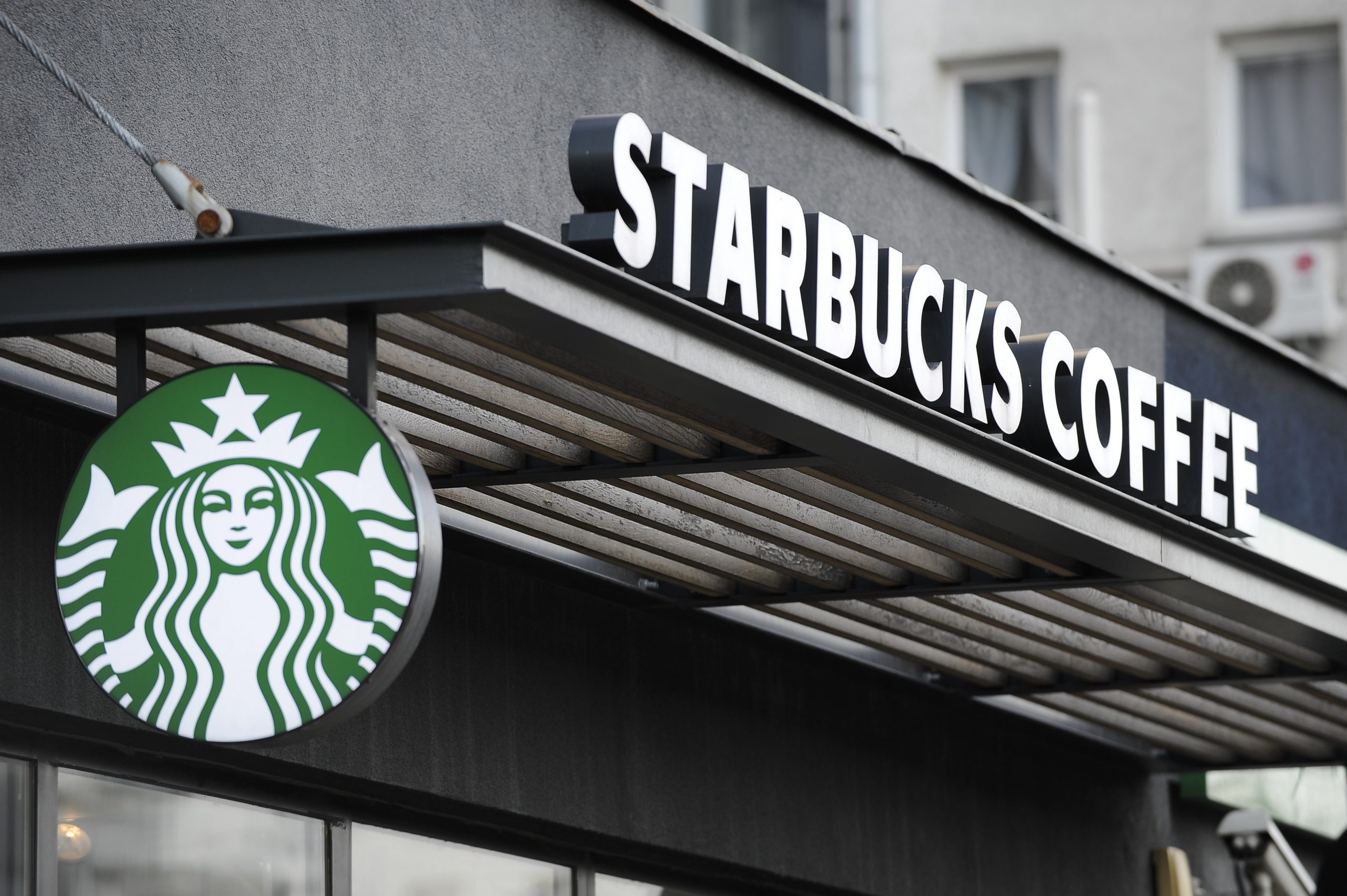How the brand can dominate the coffee sector
 Photo by Jaap Arriens
Photo by Jaap Arriens
With nearly 30,000 cafes across the globe, Starbucks has become more than just a household name. From its iconic cups, often adorned with misspelt names, to the espresso inside them, Starbucks has catapulted from one coffee bean shop in Seattle to a sprawling 80 billion dollar business over the last 47 years.
Starbucks sales account for %57 of the total cafe market.
Yes, %57!
Nearly two-thirds of all coffee sold at cafes in the U.S. comes from a Starbucks. But this impressive expansion hasn?t come without growing pains. With more than 14,000 locations in the U.S. alone, Starbucks has spread itself too thin. Having too many stores have led to fewer transactions at individual stores. To compensate, the company have raised prices. But doing this too quickly or too often can drive customers away.
? So, how did this happen?
? And what?s a coffee giant to do about it?
The year is 1973. College friends, Zev Siegel, Jerry Baldwin and Gordon Bowker decide to get into the coffee business. They found a mentor in Alfred Peet, founder of Peet?s Coffee and the man responsible for bringing custom coffee roasting to the U.S.
According to Zev Siegel, he knew the coffee industry inside and out, especially the gourmet end. He was the most educated coffee guy in the country at that time.
So with Peet?s help, the three friends opened Starbucks, a coffee bean shop and roastery at Seattle?s famous Pike Place Market in 1971. Peet provided the young entrepreneurs with roasted coffee beans and connected them with coffee brokers until they could set up their own roastery and source their own beans.
For the first decade, the founders opened five more locations in Seattle. At this point, contemporary coffee consumers might have noticed a glaring absence: actual coffee drinks. That?s a thing about the 70s coffee culture: it didn?t really exist outside the home.
There were no coffee bars. Nor was there much of a demand for espresso-based drinks. Nobody expected to get a beverage at a Starbucks coffee store until after 1980.
Starbucks? initial focus was on bringing high-quality beans to consumers who are more accustomed to instant or canned coffee. But that changed with the addition of one man.
The company hired its first really professional director of marketing and sales, and that man was Howard Schultz. He couldn?t figure out why Starbucks wasn?t selling beverages.
In 1983, Schultz travels to Italy and returns with an idea: turn the coffee bean stores into cafes Starbucks served its first latte the next year. The experiment was a success, and four years later, Schultz partnered with investors and bought Starbucks for 3.8 million. He was only 34 at the time.
Schultz pursued a strategy of aggressive expansion. By the time the company went public in 1992, it had 165 stores. By 1996, and it opened more than a thousand locations including, its first international cafes in Japan and Singapore. Growth was so rapid, that just three years later, Starbucks opened its 2,000 location.
Once they find a business model that worked, that translated to other geographies, that gave them the opportunity to really accelerate growth. Really at the pedal to the metal in terms of expanding across the globe.
Schultz switch from CEO to Executive Chairman in 2000, at which time Starbucks operated 3,500 stores in more than a dozen countries. Between 2000 and 2007, the number of Starbucks cafe is more than quadrupled, from 3,500 to over 15,000. During this period, the company opened an average of 1,500 stores every year, including 2,500 in 2007 alone. Sales shot up from $2 billion to $9.4 billion. Consumers were increasingly ditching their kitchen mugs for these iconic paper to-go cups.
But then, Starbucks hit a wall: 2007 financial crash.
That year, its rapid growth screeched to a halt and its stock price plummeted by 50% as cash-strapped consumers backed away from Tracy coffee habits.
Starbucks brought back Howard Schultz. This news alone caused Starbucks stock to shoot up by 9%. Schultz halted growth and focused on the customer experience. He shuddered cafes -more than 600 and 2008 and another 300 in 2009- and laid off around 6700 baristas.
A month after his return, Schultz ordered Starbucks to close all of its U.S. locations for one afternoon so he could re-train more than 135,000 baristas about how to make its signature expresso.
 Photo by Matt Hoffman
Photo by Matt Hoffman
Schultz?s goal was to remind customers what they loved about the brand by making the stores and experience, not just a place to get a quick coffee. They stopped selling breakfast sandwiches and brought back in-house grinding, infusing the cafe?s once again with that fresh coffee aroma.
Schultz even mandated the removal of the automatic espresso machine. These made service faster but removed much of the romance and theatre of watching baristas craft each cup of coffee.
Schultz?s makeover worked. The company?s stock soared more than one hundred and 43% in 2009 and same-store sales rebounded. Starbucks has posted positive same-store sales ever since.
During Schultz?s makeover of the cafe?s, Starbucks barely opened any new stores. But the pace picked up again in 2012. By 2017, Starbucks opened to nearly 3,000 more locations, ending the year with 20,000 cafes around the world.
However, this brings us back to the first problem: profit cannibalization.
Over-saturation particularly in urban locations, has spread sales thin. Because Starbucks has so many locations, customers don?t have to be loyal to just one. So even if Starbucks overall sales are growing, its individual same-store sales won?t reflect it.
Compounding this problem are changing consumer preferences. People are shying away from sugar-laden calorie bombs. Which happens to be one of Starbucks? staples. These signature frappuccinos contain an average of 57 grams of sugar. That?s more than double the recommended daily limit of sugar.
So to combat these problems, Starbucks is changing once again.
The company announced the closure of 150 in 2019. That may seem like a drop in the bucket for a sprawling company like Starbucks, but it?s three times the number of stores it usually closes each year.
The company will still open stores, but future growth will be focused. Additionally, decadent drinks topped with whipped cream or taking a backseat. Instead, the company is pushing lighter drinks like cold brew and it?s fruity refreshers.
The company also plans to roll out delivery to a quarter of its company-owned stores by the middle of 2019.
Perhaps the company?s biggest undertaking is its new line of upscale stores: Starbucks Reserve Roasteries.
 Image Source
Image Source
These massive, 20,000 square-foot stores are designed to be a tourist destination. Here, Starbucks baristas and bartenders experiment with different brewing methods and craft new, innovative beverages. These have proven popular.
In the first weeks, the Shanghai Roastery made an average of $64,000 every day, which is double what a regular cafe makes in a week.
The company is open for roastery so far with plans for two more. It doesn?t want you to feel like anything else that Starbucks has. Those are the kind of experience stores, the high-end experience stores that consumers are really looking for. But I think what?s gonna be actually coming out of it as the halo effect that puts the brand in a higher light among consumers.
Now that that?s pretty meaningful.

This story is published in The Startup, Medium?s largest entrepreneurship publication followed by +424,678 people.
Subscribe to receive our top stories here.



